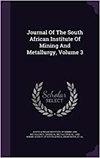Effect of titanium content on solidification structure of ferritic stainless steel gas-tungsten and gas-metal arc welds
IF 0.9
4区 材料科学
Q3 Materials Science
Journal of The South African Institute of Mining and Metallurgy
Pub Date : 2022-08-22
DOI:10.17159/2411-9717/1944/2022
引用次数: 0
Abstract
Ferritic stainless steel is utilized to fabricate automotive exhaust systems using a ferritic weld metal. Ductility of the weld metal is higher if its microstructure contains a significant proportion of equiaxed grains. The formation of equiaxed (rather than columnar) grains is favoured by a higher titanium weld metal content. In this study, the Ti content of ferritic stainless steel weld metal was changed by using Ti-free (Type 436) and Ti-containing (441) ferritic stainless steel as base metals. The metal-cored welding consumable contained 0.4% Ti. Gas-tungsten arc welding and gas-metal arc welding processes were compared. The weld metal Ti content ranged from zero to 0.5% Ti, as determined from scanning electron microscopy supplemented by inductively coupled plasma optical emission spectroscopy. Cross-sections of the weld beads were subjected to point counting (to estimate the fraction of equiaxed grains) and image analysis (to estimate the average grain size). Point counting proved to be more reliable. The fraction of equiaxed grains was sensitive to the Ti content, but not to the welding process. Below 0.4% Ti, the fraction of equiaxed grains gradually increased with an increase in the weld metal Ti content; above 0.4% Ti, the fraction of equiaxed grains rapidly increased with increasing Ti content. The transition in behaviour at 0.4% Ti corresponded to a Ti content at which Ti-rich precipitates became stable at the estimated liquidus temperature of the weld metal.钛含量对铁素体不锈钢钨极气体保护焊凝固组织的影响
铁素体不锈钢用于使用铁素体焊接金属制造汽车排气系统。如果焊缝金属的微观结构中含有相当大比例的等轴晶粒,则其延展性较高。钛焊接金属含量较高,有利于形成等轴(而非柱状)晶粒。在本研究中,使用无Ti(436型)和含Ti(441)铁素体不锈钢作为母材,改变了铁素体奥氏体不锈钢焊缝金属的Ti含量。采用含钛0.4%的金属芯焊丝,对钨极气体保护焊和金属极气体保护焊接工艺进行了比较。焊缝金属Ti含量范围为0至0.5%Ti,通过扫描电子显微镜补充电感耦合等离子体光学发射光谱测定。对焊道的横截面进行点计数(以估计等轴晶粒的分数)和图像分析(以估计平均晶粒尺寸)。点数被证明更可靠。等轴晶粒的分数对Ti含量敏感,但对焊接工艺不敏感。在0.4%Ti以下,等轴晶粒的分数随着焊缝金属Ti含量的增加而逐渐增加;当Ti含量超过0.4%时,等轴晶粒的分数随Ti含量的增加而迅速增加。在0.4%Ti下的行为转变对应于富Ti沉淀物在焊接金属的估计液相线温度下变得稳定的Ti含量。
本文章由计算机程序翻译,如有差异,请以英文原文为准。
求助全文
约1分钟内获得全文
求助全文
来源期刊
CiteScore
1.50
自引率
11.10%
发文量
61
审稿时长
4-8 weeks
期刊介绍:
The Journal serves as a medium for the publication of high quality scientific papers. This requires that the papers that are submitted for publication are properly and fairly refereed and edited. This process will maintain the high quality of the presentation of the paper and ensure that the technical content is in line with the accepted norms of scientific integrity.

 求助内容:
求助内容: 应助结果提醒方式:
应助结果提醒方式:


